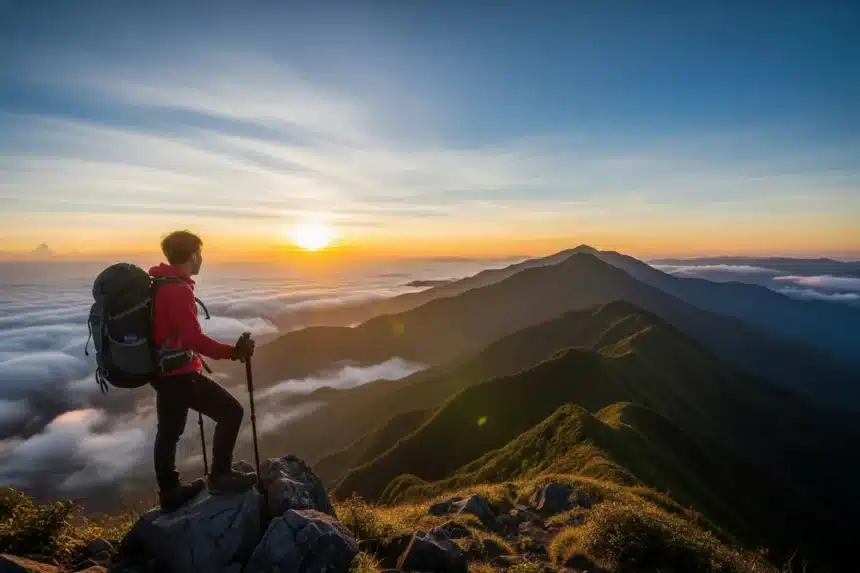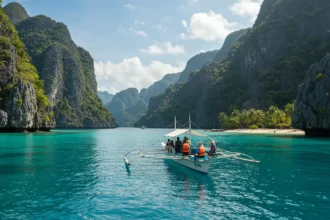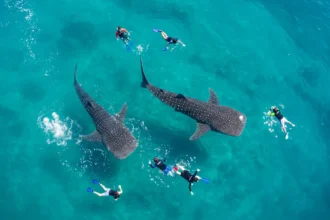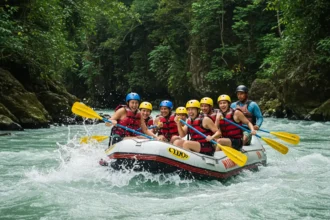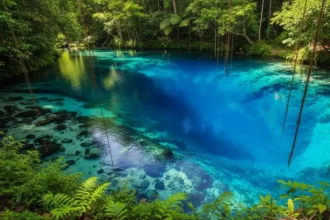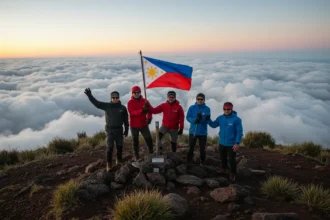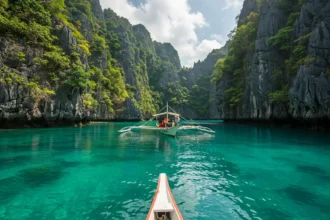The Philippines is not just about beaches and islands – it’s also home to some of the most breathtaking mountains in Southeast Asia. From the cool Cordilleras of Luzon to the towering peaks of Mindanao, there are countless trails waiting for adventurers. Whether you’re a newbie looking for an easy weekend climb or a seasoned mountaineer chasing the toughest summits, there’s a mountain here for you.
For Filipinos, climbing mountains isn’t just about fitness – it’s about diskarte, teamwork, and chasing that moment on the summit where the view makes every step worth it. Some climb to reconnect with nature, others to test their endurance, and many simply for the joy of shouting “picture muna!” at the peak.
Here’s your guide to the top mountain climbing spots in the Philippines – grouped from beginner-friendly hikes to intermediate trails and expert climbs.
🌱 Beginner-Friendly Mountains in the Philippines
If you’re new to hiking, these mountains are the perfect starting points. They’re relatively accessible from Manila, not too technical, and most can be finished in half a day or a full-day climb. Despite their beginner-friendly status, they still deliver unforgettable views and that sense of accomplishment at the summit – perfect for those taking their first step into the world of mountaineering.

Mt. Batulao (Batangas)
Located in Nasugbu, Batangas, Mt. Batulao is a favorite among weekend hikers from Metro Manila. The trail is a series of rolling hills with scenic ridges that give panoramic views of Batangas farmlands and mountains. The climb usually takes 4–6 hours round trip, with gradual ascents that are manageable for beginners. Its popularity also means you’ll likely meet fellow hikers along the way, adding to the communal feel of the climb. Sunrise and sunset hikes are especially magical here, as the soft light paints the hills gold. Camping is also an option, with several designated sites along the trail. For many Pinoy hikers, Batulao is where the love for mountains truly begins.
Mt. Pico de Loro (Cavite–Batangas)
Pico de Loro, or the “Parrot’s Beak,” is a classic beginner-friendly climb with just the right amount of challenge. Located at the boundary of Cavite and Batangas, it takes about 3–5 hours to reach the summit. The trail winds through forests and grassy slopes before opening up to wide ridges with scenic views of Cavite, Batangas, and even Manila Bay on a clear day. At the summit, hikers are greeted by the iconic Parrot’s Beak rock formation – once climbable, but now restricted for safety. The mix of manageable trail difficulty and rewarding summit views makes Pico a perfect “level-up” hike for beginners. It’s also a favorite for group climbs, with plenty of spots to rest, chat, and enjoy the journey.
Mt. Maculot (Batangas)
Famous for its Rockies viewpoint, Mt. Maculot in Cuenca, Batangas is often considered a “baptism climb” for many first-timers. The trail may be short (around 2–3 hours to the Rockies), but it is steep enough to give beginners a taste of real climbing effort. The reward at the top is one of the most iconic views in Southern Luzon – Taal Lake and Volcano from a dramatic rocky cliffside. For those with more stamina, hikers can extend to the summit and Grotto for a full loop hike. The trail is well-established, with sari-sari stores and rest stops along the way. Though tougher than Batulao or Manabu, Maculot leaves beginners with a deep sense of accomplishment and an album full of jaw-dropping photos.
Mt. Manabu (Batangas)
Part of the Malipunyo mountain range, Mt. Manabu (short for “Mataas na Bundok”) is one of the chillest beginner hikes in Batangas. The trail is shaded with forest cover, gentle in slope, and usually takes 3–4 hours round trip. At the grassy summit, hikers are treated to a 360-degree view of surrounding mountains like Makiling, Maculot, and even Banahaw on a clear day. One unique highlight: locals along the trail often offer free kapeng barako, giving the climb a distinctly Batangueño flavor. The name itself, “Manabu,” is a nod to its height, but also to the accessible nature of the hike. For those looking for a laid-back climb with friends or family, Manabu delivers a satisfying balance of nature and culture.
⛰️ Intermediate Mountain Trails
For those with a few climbs already under their belt, these mountains offer the perfect balance of challenge and beauty. They demand more stamina, involve longer trails, and introduce hikers to technical terrain – but they also reward adventurers with world-class views and unique ecosystems.

Mt. Pulag (Benguet)
Known as the “Playground of the Gods,” Mt. Pulag is a bucket-list climb for many Pinoys. Rising at 2,926 meters, it is the third-highest mountain in the Philippines and the highest in Luzon. Its most famous attraction is the sea of clouds, best seen at sunrise, where climbers stand above a blanket of mist that feels almost surreal. There are several trails: the Ambangeg trail is the easiest and often recommended for beginners, while the Akiki and Tawangan trails are longer, steeper, and favored by those seeking a bigger challenge. Pulag is also home to rich biodiversity, including dwarf bamboo grasslands at the summit and mossy forests along the way. Permits are strictly monitored by the DENR to protect its delicate environment, so hikers must prepare and book early. For many, summiting Pulag is not just a climb but a spiritual experience.
Mt. Daraitan & Tinipak River (Rizal–Quezon)
Just a few hours from Metro Manila, Mt. Daraitan is the perfect escape for those seeking both adventure and accessibility. The trail is moderately steep, offering views of the Sierra Madre mountain range and the winding Daraitan River below. At the summit, hikers are rewarded with panoramic vistas – a favorite spot for sunrise treks. But the real highlight comes after the climb: a side trip to Tinipak River, where marble-white boulders, crystal-clear waters, and hidden caves await. Some groups even camp by the river, combining mountain and river adventures in one trip. Daraitan is also known for its eco-tourism initiatives, where local guides share stories about conservation and community life. It’s a trail that balances challenge, nature, and culture.
Mt. Dulang-Dulang (Bukidnon)
At 2,941 meters above sea level, Mt. Dulang-Dulang is the second-highest mountain in the Philippines and one of the most enchanting climbs in Mindanao. The trail passes through breathtaking mossy forests, where ancient trees are covered in thick layers of moss, making the hike feel like stepping into a fairytale world. It is part of the Kitanglad mountain range, considered sacred by the Talaandig tribe, who conduct rituals before climbs to honor their ancestral spirits. The trek usually takes 3–4 days and requires good endurance due to long hours of trekking. At the summit, hikers are rewarded with sweeping views of Mindanao’s peaks, including Mt. Apo on clear days. For climbers seeking not just a hike but also a spiritual and cultural immersion, Dulang-Dulang is an unforgettable journey.
Mt. Ugo (Benguet–Nueva Vizcaya)
Once known as a logging trail, Mt. Ugo has transformed into a beloved hiking destination that offers both natural beauty and historical significance. Rising 2,150 meters above sea level, its pine-covered trails, cool mountain breeze, and ridge walks make it a favorite among mountaineers. The trek usually lasts two days, with camping at the summit or along the ridges, where the starlit sky creates a magical atmosphere. Mt. Ugo is also remembered for the 1987 plane crash tragedy that claimed the lives of dozens, adding a solemn layer of history to the climb. Today, however, it stands as a symbol of resilience and renewal, with hikers enjoying panoramic views of the Cordilleras. Because of its varied terrain and distance, Mt. Ugo is often used as a training climb for those preparing for higher peaks like Mt. Pulag or even Mt. Apo.
🗻 Expert-Level Climbs in the Philippines
These mountains demand experience, preparation, and mental toughness. They test not only your body but also your patience and spirit. For seasoned mountaineers, these are the peaks that define your journey, the kind that leave stories you’ll tell for a lifetime.
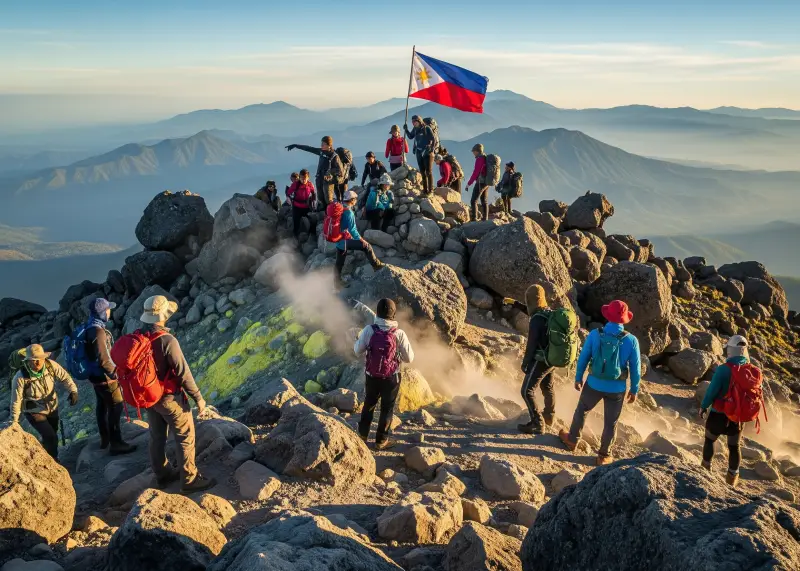
Mt. Apo (Davao)
Standing at 2,954 meters above sea level, Mt. Apo is the highest mountain in the Philippines and a bucket-list climb for every Filipino mountaineer. The trails vary – from lush rainforests and mossy woods to sulfur vents and boulder fields – making the journey as breathtaking as the summit itself. Climbers are rewarded with panoramic views of Davao, Lake Venado, and sometimes even Mindanao’s neighboring peaks on clear days. Apo is home to rare flora and fauna, including the Philippine Eagle, adding a deeper ecological significance to the climb. Most expeditions take 2–4 days, requiring stamina and preparation. For many Pinoys, climbing Apo is more than a hike – it’s a rite of passage, symbolizing endurance, grit, and national pride.
Mt. Guiting-Guiting (Romblon)
Often called G2, Mt. Guiting-Guiting is infamous as the most technical climb in the Philippines. Its razor-sharp ridges, knife-edge trails, and nearly vertical rock faces make it a climb reserved only for the most experienced mountaineers. Standing at 2,058 meters, the height may seem modest, but the difficulty is unmatched – many say even reaching halfway is already an achievement. The trek usually takes 3–5 days, with camping nights under rugged, unpredictable weather. G2 is also a training ground for Filipino climbers aiming for international expeditions, as the level of technical skills required is world-class. Successfully summiting this mountain is not just a personal milestone but also a badge of honor within the climbing community.
Mt. Halcon (Mindoro)
Rising 2,586 meters above sea level, Mt. Halcon is dubbed the “Difficult Beauty of Mindoro.” The trail is long and steep, cutting through dense forests, river crossings, and mossy jungles. Climbers often describe it as both physically punishing and spiritually rewarding. Wildlife thrives here, with sightings of endemic species and pristine waterfalls along the way. The trek normally takes 3–4 days, but weather conditions can stretch the climb longer, testing the patience and preparedness of hikers. Halcon is also historically significant – it was once a refuge for local tribes and guerrilla fighters during World War II. For those who conquer it, the sweeping views of Mindoro and nearby islands at the summit are unforgettable, making every struggle worth it.
Mt. Mantalingajan (Palawan)
Known as Mt. Manta, this 2,085-meter peak in southern Palawan is considered one of the most grueling climbs in the country. The expedition usually lasts 5–6 days, with trails passing through thick jungles, slippery moss forests, and dangerous knife-edge ridges. The climb is physically exhausting but also culturally enriching, as climbers often encounter the indigenous Palaw’an tribe, whose way of life has remained rooted in tradition. Mantalingajan is also famous for its biodiversity – rare orchids, pitcher plants, and unique wildlife thrive in its forests. The mountain’s difficulty lies not just in its terrain but in its remoteness; getting to the jump-off alone is already an adventure. Those who reach the summit are rewarded with surreal views of southern Palawan, proof of why it’s considered one of the crown jewels of Philippine mountaineering.
📊 Table: Top Mountain Climbing Spots in the Philippines (By Difficulty)
| Difficulty | Mountain | Location | Highlight |
|---|---|---|---|
| Beginner | Mt. Batulao | Batangas | Rolling ridges, scenic views |
| Beginner | Mt. Pico de Loro | Cavite/Batangas | Parrot’s Beak summit |
| Beginner | Mt. Maculot | Batangas | Rockies viewpoint, Taal Lake |
| Intermediate | Mt. Pulag | Benguet | Sea of clouds at sunrise |
| Intermediate | Mt. Ugo | Benguet/N. Viz | Pine ridges, camping trail |
| Intermediate | Mt. Dulang-Dulang | Bukidnon | Mossy forest landscapes |
| Expert | Mt. Apo | Davao | Highest peak in the country |
| Expert | Mt. Guiting-Guiting (G2) | Romblon | Knife-edge ridges, toughest trail |
| Expert | Mt. Halcon | Mindoro | Long, steep jungle climb |
| Expert | Mt. Mantalingajan | Palawan | Multi-day expedition, tribes |
FAQs
1. What’s the easiest mountain to climb in the Philippines?
Mt. Batulao and Mt. Manabu in Batangas are beginner-friendly and ideal for day hikes. They’re great choices for first-timers who want to try mountain climbing without overwhelming difficulty.
2. What mountain has the best view?
Mt. Pulag is famous for its sea of clouds, while Mt. Maculot’s Rockies gives a breathtaking view of Taal Lake. For expert climbers, the knife-edge ridges of Guiting-Guiting are unforgettable.
3. Do I need a guide to climb these mountains?
Yes, most mountains in the Philippines require local guides. This supports the community and ensures safety, especially on less marked trails.
4. What should beginners prepare before their first climb?
Bring proper shoes, water, snacks, sun protection, and a light jacket. For day hikes, fitness and hydration are key. For overnight climbs, tents, sleeping bags, and cooking gear are essentials.
5. Are permits needed for mountain climbing in the Philippines?
Many mountains require permits, usually processed through the local tourism office. Fees are affordable and help with conservation.
6. Is it safe to climb mountains during rainy season?
It’s best avoided. Trails can get slippery, rivers can swell, and visibility can drop. Peak climbing seasons are usually November to May (dry months).
7. How much does a typical climb cost?
Day hikes cost around ₱500–₱1,500 per person (guide + transport + fees). Multi-day expeditions like Mt. Apo can range from ₱5,000–₱10,000, depending on group size.
8. Can kids or seniors join climbs?
Yes, for beginner-friendly hikes like Mt. Batulao or Mt. Manabu. Always check fitness levels and consult guides before attempting longer climbs.
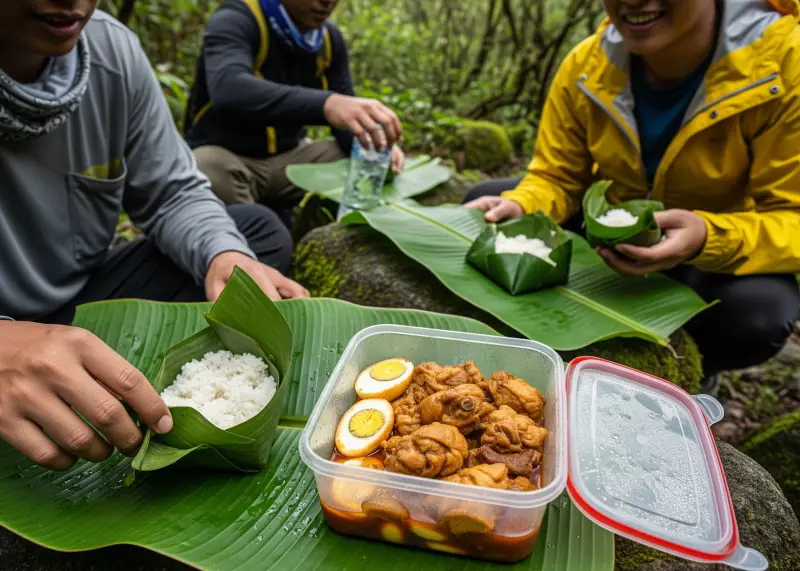
🌏 Why Mountain Climbing is More Than Just Adventure for Pinoys
The top mountain climbing spots in the Philippines offer more than stunning views and physical challenges – they represent journeys of growth and resilience. Every step on the trail is a lesson in patience, teamwork, and respect for nature.
For a student in Manila, a day hike might be a break from city life. For an OFW on vacation, climbing Pulag may be a dream finally fulfilled. For seasoned climbers, conquering Apo or Guiting-Guiting is a lifelong badge of honor.
Climbing mountains also reflects the Filipino way of facing challenges: slowly but surely, with diskarte and determination. Reaching the summit isn’t just about height – it’s about proving to yourself that you can overcome struggles, whether on the trail or in life.
In 2025, as more Pinoys seek balance, adventure, and meaning, mountain climbing continues to rise in popularity. And with each climb, we rediscover not just the beauty of our islands, but also the strength within ourselves. Because in the end, the best view isn’t just at the top – it’s the journey that takes us there.



